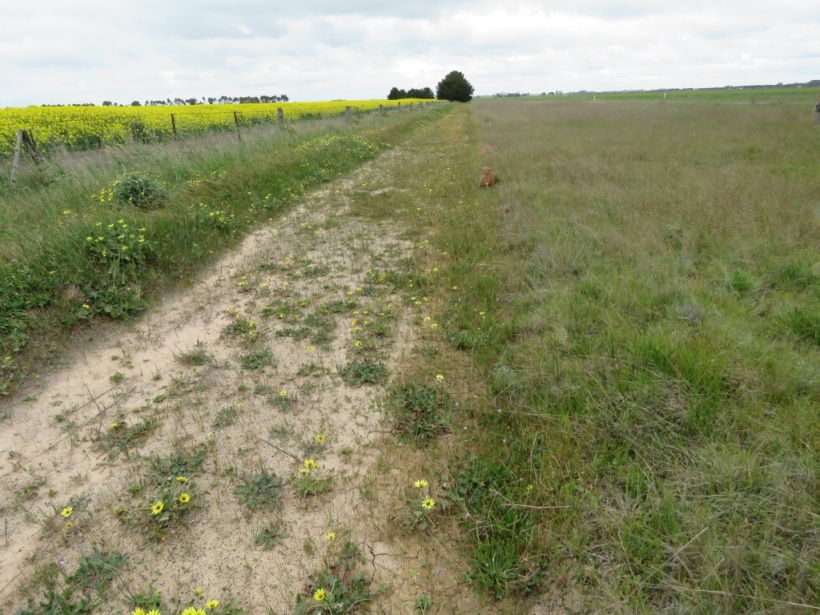Many of our roadsides where there are significant grasslands also happen to be the roads that are strategic fire breaks. The regular burning, every 2-3 years, is one of the reasons why the grasslands still exist. To enable a roadside to be burnt safely there needs to be a fire break.
It is possible to work off a slashed break but it is more common to have a graded or mineral earth break. It takes a certain amount of skill to prepare a mineral earth break and in some cases the operator is required to go back after the burn, to spread the spoil back, so that a row of soil is not left against the fence.
If it is not spread back the raised spoil becomes a great place for weeds to grow, which will then either blow into the paddock or across the native grassland. There also may be an impact on drainage. Putting in a fire break is just one of the expenses involved in managing a roadside, but it is a big one. Fire breaks was one of the many issues discussed at last week’s VVP Linear Reserves Project bus trips for weed contractors.
The photo below is an example of where a far too wide area was cultivated for a break and now there is an extensive weedy strip. In general native grasslands will produce less biomass than a grassland that has been damaged in some way and introduced grasses such as phalaris, have become established.





You must be logged in to post a comment.